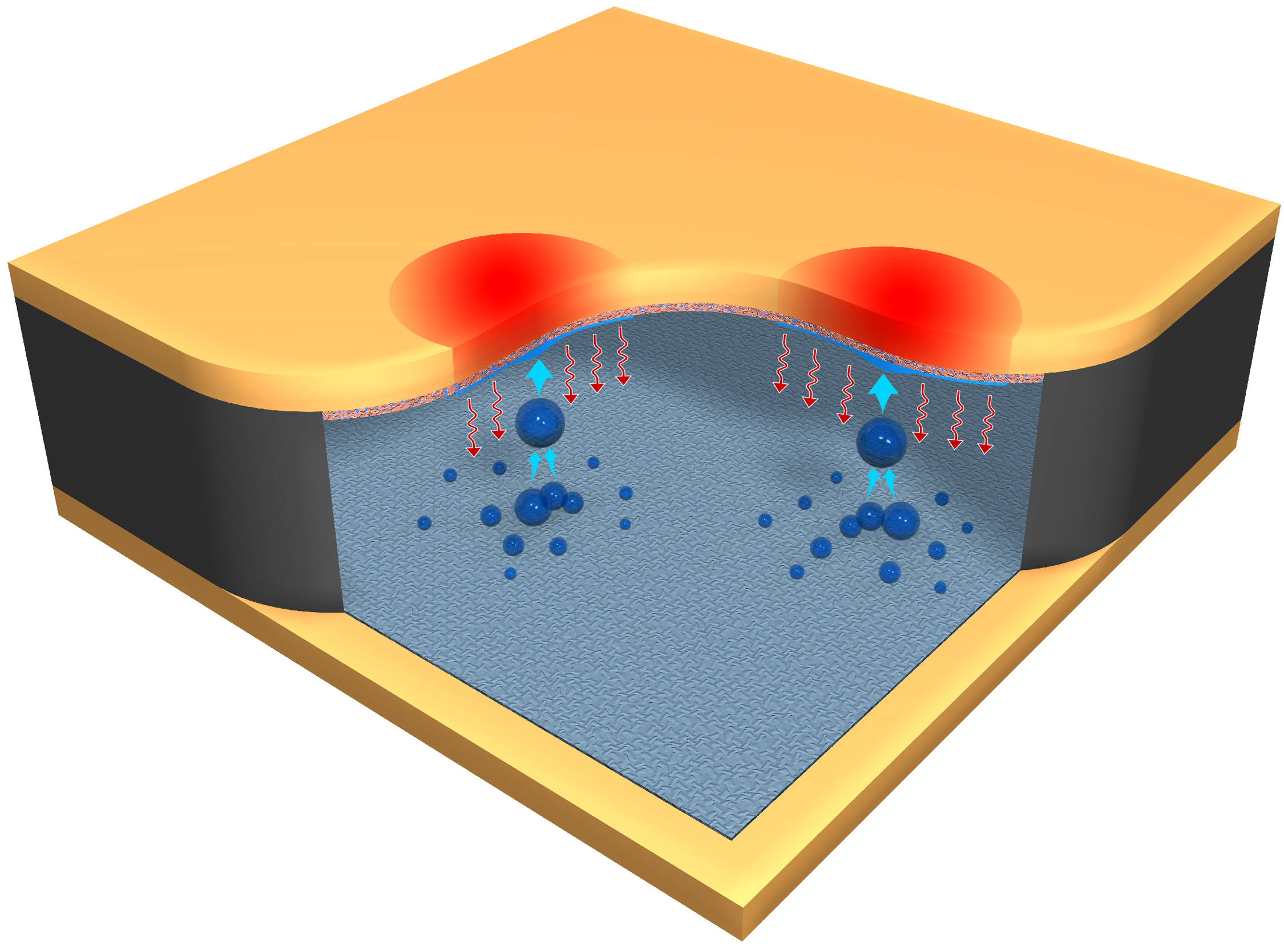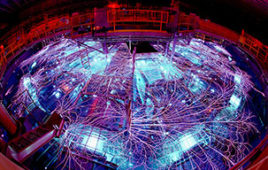
A schematic of how the new jumping droplets electronics cooling system works. Credit: Duke University
A new technique is utilizing “jumping droplets” to help solve the problems with hotspots.
A group of researchers led by Chuan-Hua Chen, an associate professor and Alfred M. Hunt Faculty Scholar in the Department of Mechanical Engineering and Materials Science at Duke University, observed that when two water droplets merge together on a water-repellant (superhydrophobic) surface, the merged droplet spontaneously jumps perpendicular to that surface.
The group of researchers from Duke University and Intel Corp. further established that the out-of-plane jumping motion is driven by surface energy initially stored on the droplets and released upon drop coalescence, which can locally cool hot spots.
The jumping droplet vapor chamber consists of two parallel plates—a superhydrophobic surface and a sponge-like surface.
“When a hotspot appears on the superhydrophilic surface saturated with water, it drives the working fluid to vaporize,” Chen said in a statement. “The water vapor condenses on the opposing superhydrophobic surface, and rejects the waste heat.
“As condensate droplets grow and merge, the coalescence-induced jumping motion returns the working fluid back to the superhydrophilic surface,” he added. “This ‘jumping return’ enables continuous operation of the vapor chamber to dissipate heat.”
The jumping droplet technique can perpendicularly return the working fluid to the hotspots and because jumping droplets are driven by intrinsic surface energy, the technique is independent of external forces and gravitational orientation.
The jumping droplet technique cools hotspots without any active power input, similar to flat-plate heat pipes.
Flat-plate heat pipes can remove heat through horizontal spreading, which is much more effective than high thermal conductivity copper or even diamond heat sinks but they lack a vertical mechanism to dissipate heat.
“Our technique not only retains the high effectiveness of flat-plate heat pipes for in-plane heat spreading, but also provides a much better capability for out-of-plane heat transport because of the perpendicular jumping mechanism,” Chen said.
According to the study, hotspot cooling is critical to the performance and reliability of electronic devices but existing techniques are not very effective in managing mobile hotspots.
Chen explained that the combination of horizontal and vertical spreading is ideal for heat dissipation.
“To avoid flooding, it’s useful to spread the rain horizontally over a large area,” Chen said. “But if the ground becomes soaked and water has no vertical pathway to escape, flooding is inevitable.
“Our jumping droplet technology addresses this technological void with a vertical heat spreading mechanism, opening the door to outperforming the best solid heat spreaders in all directions,” he added.
The new method could enable faster computing and longer electronics because the performance of computers and power electronics depends so heavily on their ability to dispose of heat waste.
According to the study, the technique retains the passive nature of traditional vapor-chamber heat spreaders while offering a mechanism to address mobile hotspots with a pathway toward effective thermal transport in the out-of-plane direction.
The researchers will now look at material choices to best exploit the new technique.
“It’s technically challenging to design a jumping droplet vapor chamber with materials of opposite wettability that are compatible with high-temperature vapor,” Chen said. “We’ll fine-tune material choices so that our system can stably work at higher temperature with more effective heat dissipation.
“We’ve already demonstrated a cooling performance comparable to copper but I see a pathway to significantly exceed this industrial standard once we sort out the material issue.”
Electronic devices are often constrained by their inability to evenly dissipate the waste heat they produce and because the waste heat isn’t uniformly distributed, hotspots become prevalent.
The study was published in Applied Physics Letters.




